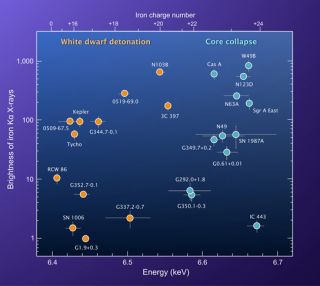 An international team of astronomers using data from the Japan-led Suzaku X-ray observatory has developed a powerful technique for analyzing supernova remnants, the expanding clouds of debris left behind when stars explode. The method provides scientists with a way to quickly identify the type of explosion and offers insights into the environment surrounding the star before its destruction.
An international team of astronomers using data from the Japan-led Suzaku X-ray observatory has developed a powerful technique for analyzing supernova remnants, the expanding clouds of debris left behind when stars explode. The method provides scientists with a way to quickly identify the type of explosion and offers insights into the environment surrounding the star before its destruction.
“Supernovae imprint their remnants with X-ray evidence that reveals the nature of the explosion and its surroundings,” said lead researcher Hiroya Yamaguchi, an astrophysicist at NASA’s Goddard Space Flight Center in Greenbelt, Maryland. “Thanks to Suzaku, we are now learning how to interpret these signals.”
The technique involves observing specific X-ray emissions from iron atoms in the core of supernova remnants. Even after thousands of years, these atoms remain extremely hot, stripped of most of the 26 electrons that accompany iron atoms under normal conditions on Earth. The metal is formed in the centers of shattered stars toward the end of their energy-producing lives and in their explosive demise, which makes it a key witness to stellar death.
Read the full press release with links to the paper here.

